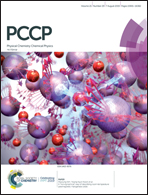Phase-field modeling of the coupled domain structure and dielectric breakdown evolution in a ferroelectric single crystal
Abstract
The study of domain switching and dielectric breakdown behavior of ferroelectrics together with their relations is crucial for understanding the essence of ferroelectric physics and exploring their applications. In this work, a phase-field method is developed to reveal the coupled domain structure and dielectric breakdown evolution in a ferroelectric single crystal (FSC) by employing the Ginzburg–Landau kinetic equation and Griffith type energy criterion. Results show that the domain switching mobility, symbolizing the speed of polarization evolution, has a significant influence on ferroelectric properties, namely coercive field, dielectric breakdown strength (DBS), discharge energy density (DED), and energy storage efficiency (ESE). It is found that FSC with the higher domain switching mobility always displays a lower coercive field and smaller remanent electric displacement (or polarization) together with a higher DBS, accounting for a higher DED and ESE. Such findings can provide effective guidance in understanding and designing high-DBS and high-energy-density ferroelectrics. In addition, the defect concentration has a significant influence on the DBS and the pattern of breakdown paths.



 Please wait while we load your content...
Please wait while we load your content...